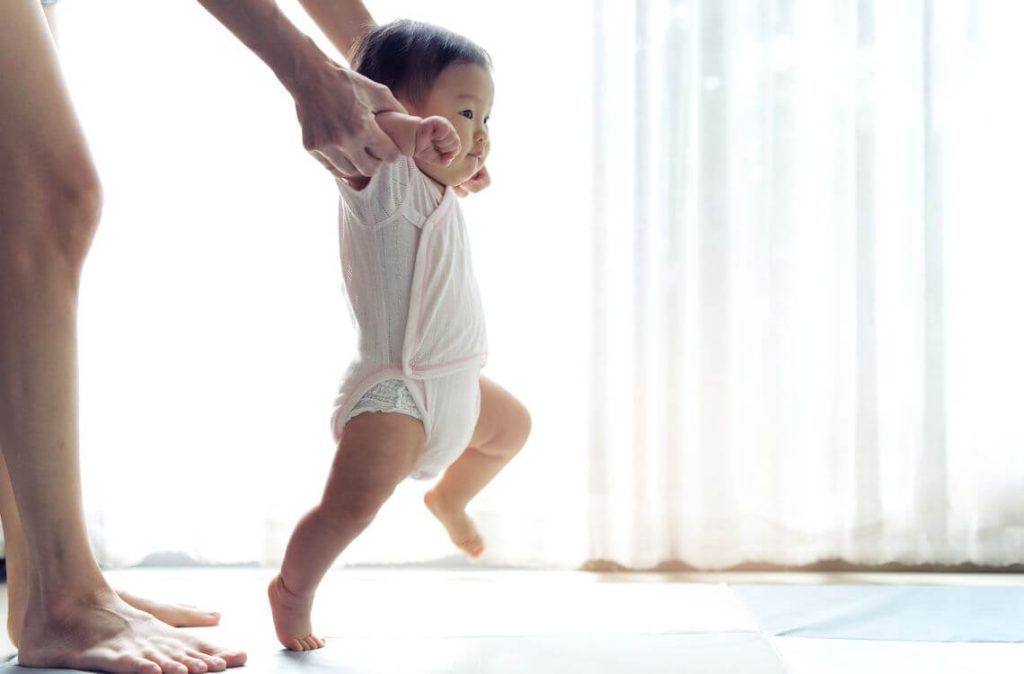Walking is one of the biggest milestones your baby will pass as they grow up.
Teaching your baby to walk may seem like a huge task, but with these tips and tricks, they’ll be toddling around in no time.
Here are some suggestions as shared by Healthline.
Set the Pace
Highlighted
The best way to speed up the process is to begin early.
They don’t have to walk right away, but by practicing certain exercises you can definitely make the process that much smoother.
The first practice you should implement is tummy time, which is simply allowing your baby to lay on their tummy to play.
This strengthens their neck and shoulder muscles as well as improves their motor skills, so they can start to crawl and sit up sooner.
You can start tummy time as soon as a week or two after birth.
Tummy time should always be monitored, so stick around to keep an eye on your baby as they manoeuvre about to avoid any accidents.
Once your baby has developed some core strength and mobility, they can start sitting on a stool.
The significance of this is that stools don’t have any back support, meaning they will have to support themselves to some degree.
You can start off with chairs that have minimal back support and progress to stools as they get the hang of it.
Stay by their side for some time to make sure they don’t topple over.
The last stage before your baby gets up on their feet is crawling, or you could call it the first stage of walking.
With a combination of tummy time, play, and encouragement, crawling should come naturally.
Beginner Steps
Assisted walking is the next step up from crawling around.
Usually initiated by the parents, you will have to pick your baby up and guide them to start walking upright.
When people think of assisted walking, they normally picture a parent holding their baby’s hands as they walk.
This is actually not the best way to go about it. Instead, hold your baby’s torso with both hands.
Not only can your steer them better, it feels closer to the normal walking stance and will get your child more used to the movements.
Once your baby shows signs of trying to get up on their own, it’s time to give them some support (in the literal sense!).
Taking their first steps with something to hold on to can lend them some security and safety.
Sofas, chairs, and shelves all make adequate support features for your baby to hold on to as they find their footing.
Just make sure there aren’t any splinters or sharp edges that they could hurt themselves on.
Another form of support is push or pull toys.
These are toys that have a handle that your baby can use to roll them back and forth while standing.
It’s a step up from holding onto grounded objects but still gives your baby something to help keep their balance.
These toys usually come in the form of animals so it looks like they’re taking their pet for a walk!
Using all these techniques will encourage your baby to take their first real steps as well as make it easier for them to do so.
Continue practicing for as long as your baby needs to get comfortable enough to walk.
Walk Like a Pro
Now that your child has taken to walking, the next thing you need to do is childproofing your house.
Remember to do this as soon as your child starts to move around, if not when they are born.
A list of things to childproof are:
- Corners of furniture
- Stairs
- Cabinets/cupboards
- Glass ornaments
- Sharp edges
- Unstable furniture
- Heavy objects likely to fall
- Long thin objects
Childproofing can mean many things; including placing padding, installing locks, or even removing some things completely.
It may cause some interior design problems but your baby’s safety comes first.
Outdoor safety is another concern for when your baby starts to toddle.
The rules of indoors go out the window when you go outside.
One of the most important rules is to always wear shoes, especially for young children.
Apart from hurting their feet there are various bacteria and parasites that can enter their systems from the soil.
Other than physical safety, make sure to take other precautions when taking your baby outside, like wearing sunscreen and using mosquito patches.
Your baby shouldn’t be outside barefoot.
However, it is not only acceptable but recommended when they are walking on a safe and clean surface.
Walking barefoot improves your baby’s balance and skill.
They get more familiar with the terrain and can navigate better than if they were wearing socks or booties.
It can also help them get better at climbing.
Mobility in your feet is just as important as in your hands, although you might feel the need to steel yourself for a walking baby, let alone a climbing one.
Practice Makes Perfect
Your baby might take longer to walk than expected, so just remember that progress doesn’t look the same for everyone.
Late walkers are common and they always get the hang of it in the end.
Do not let disinterest from your baby’s side deter you and keep up practicing the exercises.
One day things will click and your baby will take their very first baby steps.
In the meantime, sit back and enjoy every moment with your baby, parents!
For more insightful stories and fun recipes, stay tuned to Motherhood Story!
